Learn Everything About Mid-Autumn Festival || Customs, Food and Legends
On the 15th day of the 8th month of the Chinese lunar calendar, is the Mid-Autumn Festival.
DID YOU KNOW – In 2020 this actually fell on China’s National Day, October 1st.
This is a major traditional Chinese festival which is widely celebrated in all parts of the country.
There are three main legends surrounding the festival, including the legend of Chang’E, the Jade Rabbit and Wu Gang.
Mid-Autumn Festival | The Celebration
Mid-Autumn Festival | Moon Cakes
Mid-Autumn Festival | Legend of Chang’E
Mid-Autumn Festival | Other Legends
Mid-Autumn Festival | Mid-Autumn Festival Greetings
Mid-Autumn Festival | FAQs
Future Mid-Autumn Festival Dates:
2024 – September 17th
2025 – 6th October
2026 – 25th September
Mid-Autumn Festival | The Celebration
Also known as “The Moon Festival”, 中秋节(zhōngqiū jié) it is celebrated at that time of the year when the moon is at its brightest and fullest.
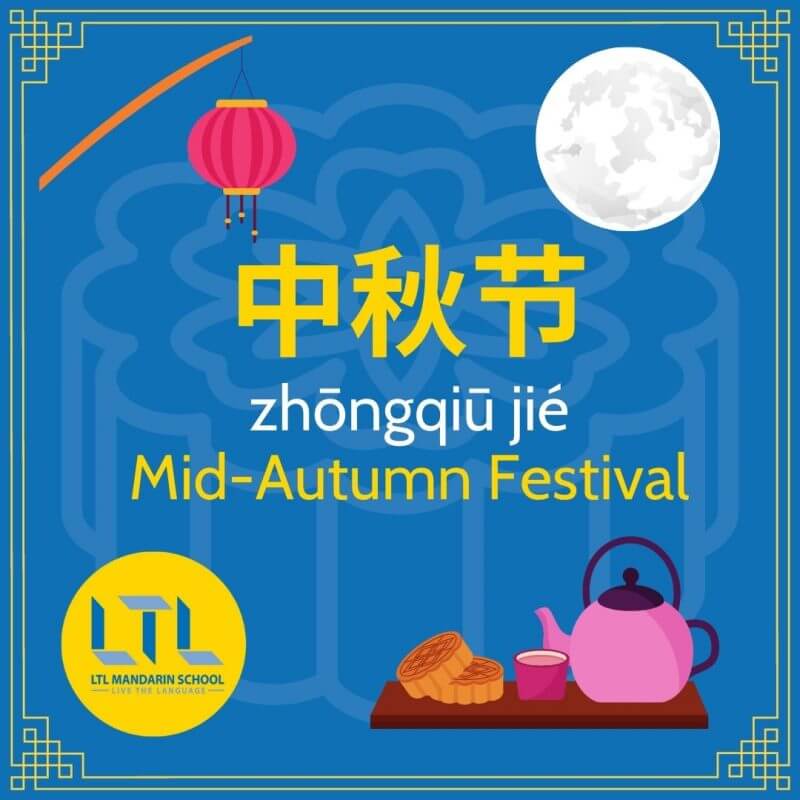
According to Chinese tradition, the roundness of the full moon is strictly connected to a sense of completeness and togetherness, thus Mid-Autumn Festival is a time to be with family.
At night people either go on roofs or gather in courtyards to admire the moon with families.
They burn joss sticks, offer sacrifices to the moon, eat the typical “Mid-autumn Festival foods”, express their love and best wishes for family members and absent friends and tell the magical legends explaining the origin of the festival.
This is festival is woven deep into Chinese society is believed to have been celebrated as far as 3000 years ago during the Shang Dynasty.
However, it only became an official Chinese holiday during the Tang Dynasty (618-907 AD).
The most popular one is “Chang’E Flying to the Moon”. See more below
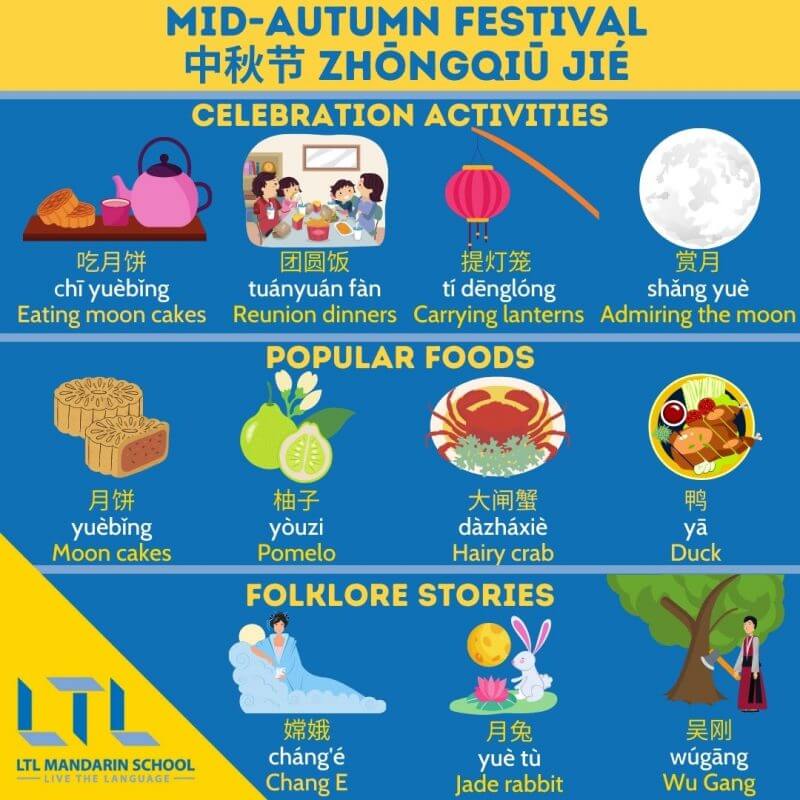
Mid-Autumn-Festival | Moon Cakes
Any self-respecting Mid-Autumn feast features pumpkin, duck, pear, crab, river snails, taro, pomelo, wine fermented with osmanthus flowers, etc… but the most traditional and important dessert of this festival is the Mooncake.
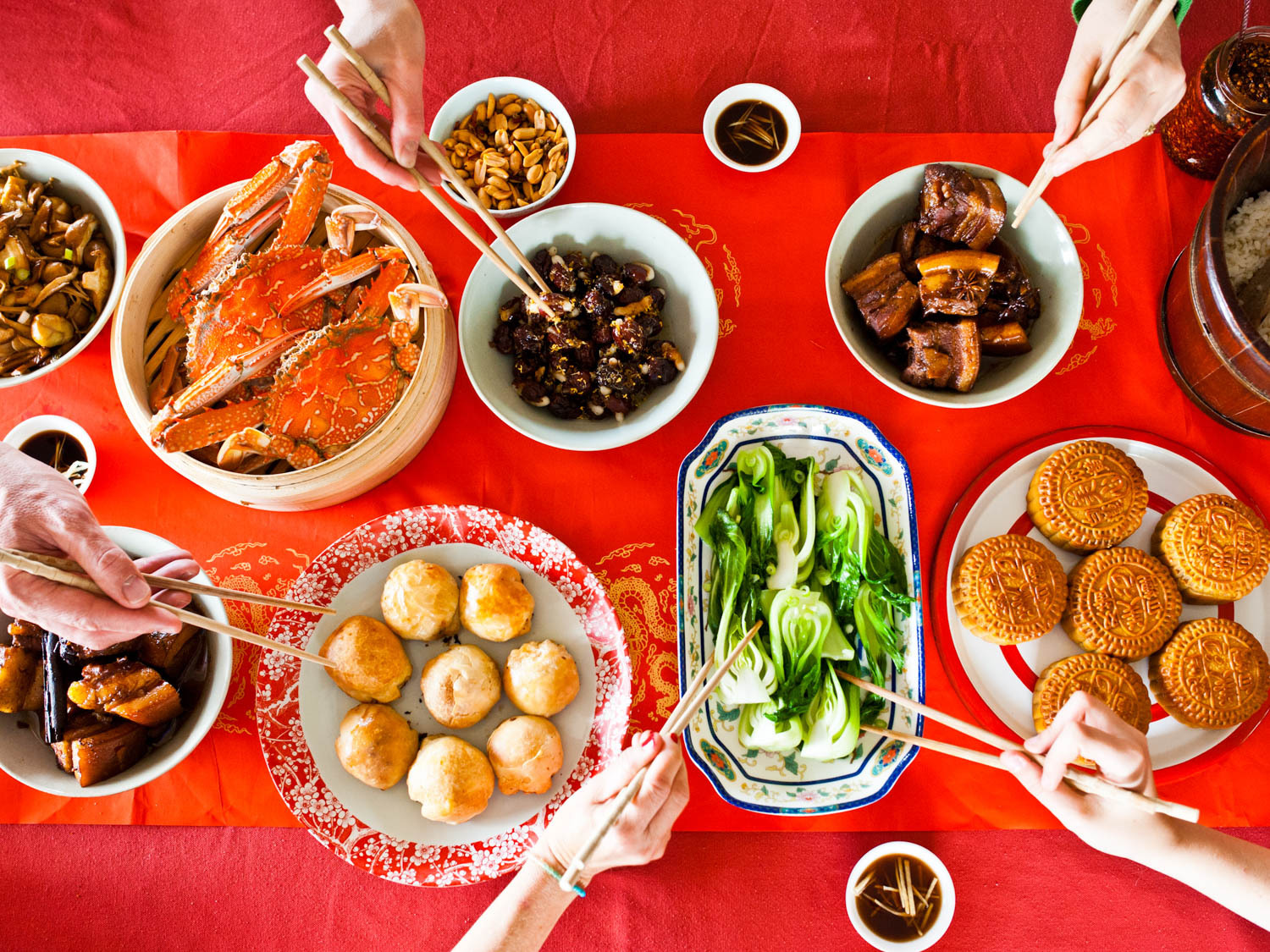
Mooncakes (月饼 yuèbǐng) are traditional Chinese pastries. They are made from wheat, flour and various kinds of dense stuffing such as; pork, nuts, seeds, lotus seed paste, red bean paste, and egg yolk.
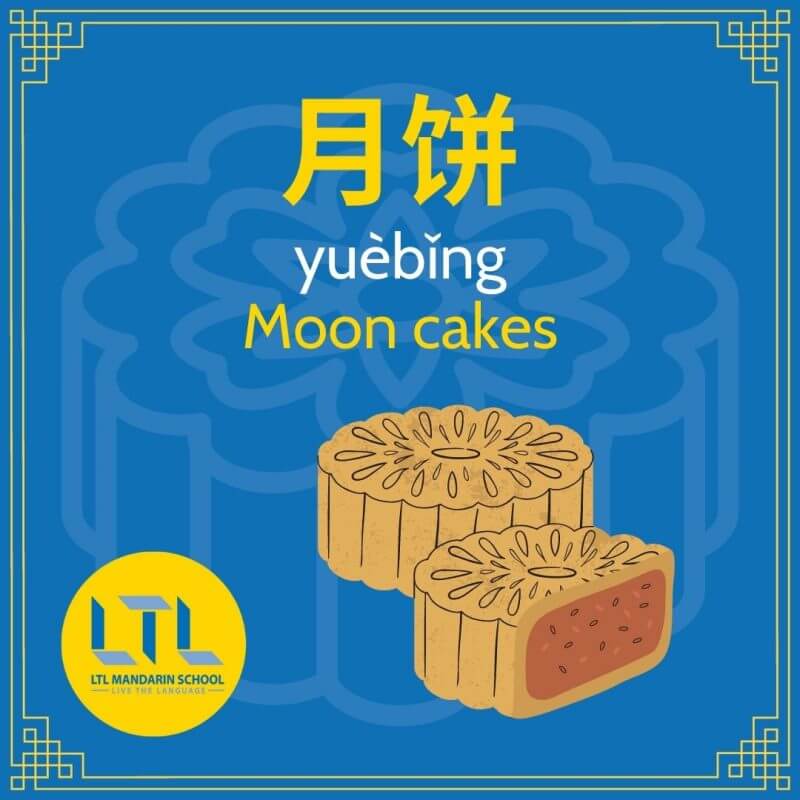
They symbolise prosperity, family reunion, and one cake, measuring about 10 cm in diameter and 3–4 cm thick, is traditionally cut into pieces that equal the number of people in the family.
Baking a mooncake at home takes a long time, so most people prefer to purchase their cakes in bakeries and supermarkets.
Automation has speeded up the preparation process considerably and mooncakes have become a big business.
Even though older people complain about younger generations’ children not appreciating the cakes the way they used to, Chinese bakeries, confectionery companies and food-related chains are finding ways to make the pastry into something modernised and cool.
Recent contemporary forms are even made from ice-cream, chocolate, cream cheese, jelly and matcha. Some bakeries offer vegan options too.
If you need a sneaky drink to get you through the hectic holidays, we found a whisky-filled moon cake too!
Packaging has also become more extravagant and quirky in modern times, with a huge range of colors, designs and shapes available. We even spotted a KFC bucket shaped mooncake box online, which, even more oddly, actually looked pretty fancy!
What quirky moon cake flavors of box designs have you seen before? Let us know in the comments ⬇️

Now that you know everything you need to know about the Mid-Autumn Festival on Thursday night, go buy a mooncake, look up to the sky, enjoy the full experience of this beautiful Chinese tradition and take it all in.
Now let’s talk about the legend of the Mid Autumn Festival and how it came about…
Mid-Autumn Festival | Legend of Chang’E
On the 15th day of the 8th lunar month, people in China celebrate 中秋节(zhōngqiū jié) “Mid–Autumn Festival”. Zhōngqiū jié is the second most important festival after Chinese New Year and it was first celebrated to give thanks for a bountiful harvest.
It is also known as “The Moon Festival” as it is celebrated when the moon is believed to be the biggest and fullest. This year will be on October 4th, during the Chinese “Golden Week“.

According to Chinese tradition, during Mid-Autumn Festival families gather for dinner, people stare at the bright full moon while having mooncakes as desserts and listening to the magical legends explaining the origin of the festival.
Among them, the most popular one is “Chang’E Flying to the Moon”.
According to this legend, the beautiful Chang’E (嫦娥) was married to an expert archer, Hou-Yi(后羿). At that time ten suns rose in the sky.
Crops were dying and people were suffering, so one day Hou-Yi used his bow and arrows to shoot down nine of them, leaving just one sun. For this heroic gesture, he was given an elixir of immortality.
Unwilling to take it, he asked his wife Chang’E to keep it safe.
One day, in an emergency situation, the lady took the elixir and became immortal.
As soon as she swallowed the potion, she started to float and flew off, until she finally landed on the moon.
Deeply missing his wife, Hou-Yi moved a table under the moon, preparing some food on it in order to make her come back to him.
Since then, during the festival, people have offered lots of food to worship Chang’E on the Mid-Autumn Festival night.
Usually, Chinese children are told Chang’E is not alone on the moon because the immortal Jade Rabbit lives there with her…
Mid-Autumn-Festival | Other Legends
Jade Rabbit
The story goes that there were once three animals who lived in a forest: a rabbit, a fox and a monkey.

Three immortals reincarnated themselves as three old beggars.
They went to the forest and begged the animals to give them food.
The fox and the monkey both gave food to the immortals, but the rabbit didn’t have any food.
The rabbit felt guilty so she said “I’m sorry I can’t offer you any food, but I can give you myself” and jumped into the fire.
The three immortals were so moved by the rabbit’s sacrifice that they made her immortal and sent her up to live in the Moon Palace.
The rabbit is now known as the Jade Rabbit in English, although the most common name in Chinese actually translates as Moon Rabbit (月兔 yuè tù).
Wu Gang
Another popular legend associated with Mid-Autumn Festival is that of Wu Gang (吴刚 wúgāng).
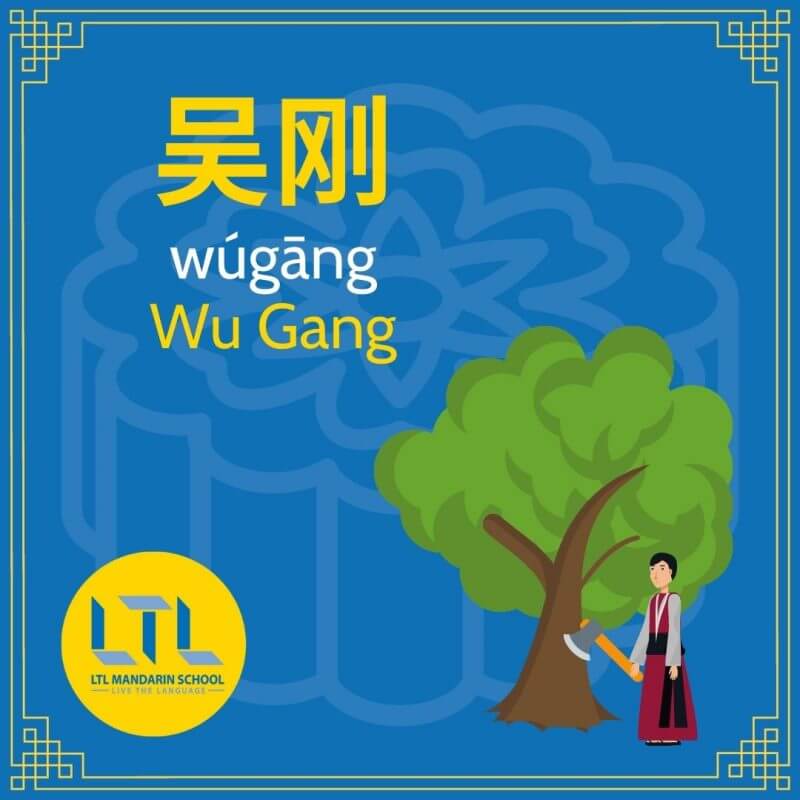
Long ago there lived a wood cutter called Wu Gang.
Wu Gang desperately wanted to become immortal, however he didn’t try very hard.
The Jade Emperor was angry at Wu Gang’s laziness so decided to punish him.
The Jade Emperor created a huge cherry bay tree on the moon and told Wu Gang that if he managed to cut down the tree he would become immortal.
However, the Jade Emperor did not tell Wu Gang that the tree would regenerate and heal after every chop!
Many Chinese people say that you can still see the shadow of the tree on the moon and if you listen carefully can hear Wu Gang still chopping, trying to finish his never ending task.
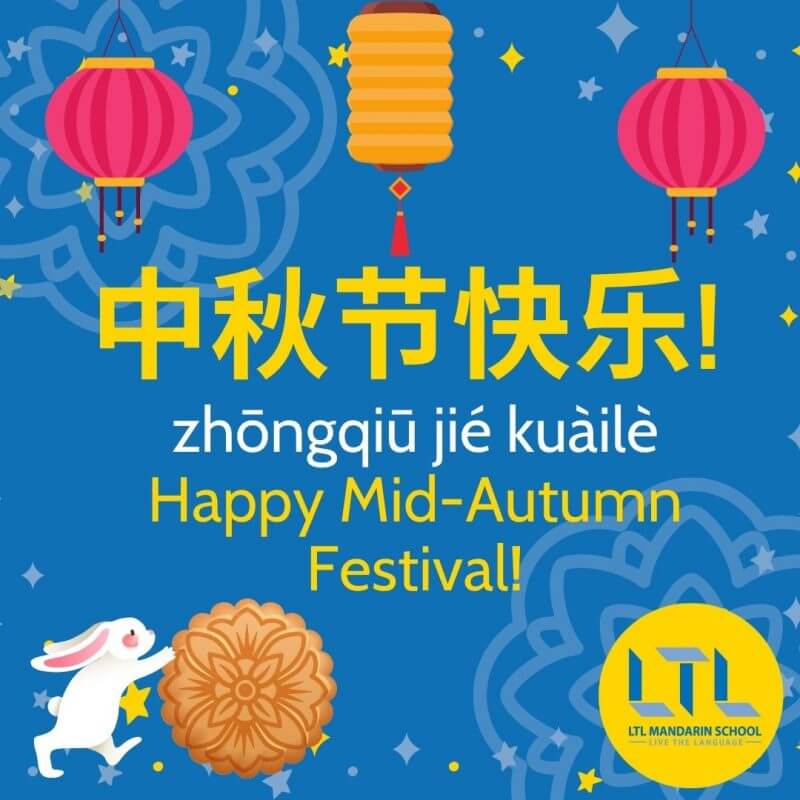
Mid-Autumn Festival | Greetings
So, now that you’re all clued up on mooncakes and legends, let’s take a look at some common festival greetings you could say to your Chinese friends to spread some Mid-Autumn Festival cheer!

First and foremost, let’s look at the most common phrases you’ll see and hear around the holiday period:
Happy Mid-Autumn Festival
中秋节快乐
zhōngqiū jié kuàilè!
Other (and slightly more complicated!) phrases include the following two, which emphasize the family and reunion element of the Mid-Autumn festival:
Happy Mid-Autumn Festival! May the round moon bring you a happy family and a successful future.
祝福中秋佳节快乐,月圆人圆事事圆满.
Zhùfú Zhōngqiū jiā jié kuàilè, yuè yuán rén yuán shìshì yuánmǎn.
Even though we’re miles apart, we wish each other a long life so we can share the beauty of the moon together.
但愿人长久,千里共婵娟
Dàn yuàn rén chángjiǔ, qiānlǐ gòng chánjuān
Now that you know all about the festival, here at LTL we want to wish you:
Happy Mid-Autumn Festival!
中秋节快乐 zhōngqiū jié kuàilè!
Mid-Autumn Festival in China // FAQs
When is Mid-Autumn Festival?
Mid-Autumn Festival is celebrated on the 15th day of the 8th month of the Chinese lunar calendar.
2024 – September 17th
2025 – 6th October
Why do we celebrate Mid-Autumn Festival?
Celebrations and traditions of the Mid-Autumn Festival vary according to where you are, but the three main fundamental concepts of the festival are the same:
Giving thanks for the harvest
Celebrate the reunion of family
Praying for things such as longevity and good fortune.
What countries celebrate Mid-Autumn Festival?
China, Japan, Korea, Vietnam, and many other East and Southeast Asian countries celebrate Mid-Autumn Festival.
What do you say ‘Happy Mid-Autumn Festival’?
中秋节快乐!Zhōngqiū jié kuàilè!
Happy Mid-Autumn Festival!
What is the story of Mid-Autumn Festival?
The most popular story of Mid-Autumn Festival is the Legend of Chang’e.
Legend goes, the sky had ten suns that scorched the earth. Houyi shot down all but one, and told the only one remaining to be good for the people.
While Houyi became admired and respected afterward, a goddess even giving him an elixir of life.
Houyi chose to not take the elixir as he wanted to stay with his wife Chang’e, and asked her to hide it. His reputation, however, also earned him jealousy — Feng Meng in particular decided to steal the elixir.
Chang’e, out of desperation to keep it out of the wrong hands, took it herself. She floated up to the moon, and we celebrate Mid-Autumn Festival to thank her and wish for their reunion.
When did the Mid-Autumn Festival start?
The Mid-Autumn Festival is said to have originated from the Tang Dynasty over a thousand years ago and was popularised in the Song Dynasty.
By the Ming and Qing Dynasties, it was already a widely celebrated holiday across China.
What are Moon Cakes?
Moon cakes, known as 月饼 yuèbǐng are a type of traditional Chinese pastry that are typically consumed during the Mid-Autumn Festival, also known as the Moon Festival. Their round shape symbolizes family unity and togetherness.
They come in various sizes, colors, and flavors. In recent years, there have been innovations in mooncake flavors and fillings, ranging from fruit-based options to more modern interpretations like chocolate or ice cream-filled mooncake!


 Hi, my name is Mojca! I am from Slovenia and I work as a student advisor at our Shanghai school.
Hi, my name is Mojca! I am from Slovenia and I work as a student advisor at our Shanghai school.




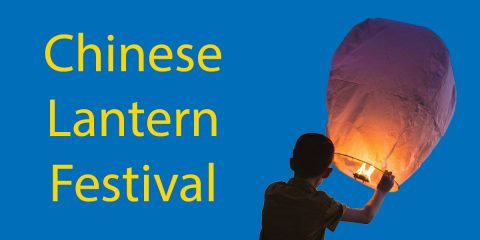

8 comments
[…] we learned in Part 1, during Moon Festival people usually eat mooncakes, pomelos and barbecue in Taiwan according to the tradition. However, don’t just focus on the […]
[…] Mid-Autumn Festival or Zhong Qiu Jie (中秋节) is one of the most commonly celebrated traditional holidays in China. It has also been […]
[…] 2 – Mid-Autumn Festival takes place on month 8 and day 15 of the Chinese lunar calendar, usually mid/late September. Bare […]
LOVE Mooncakes but the 7/11 ones are awful. Invest wisely!
Oh we love Mooncakes, LTL is always full of them during this time of year!
LTL
[…] is Mid-Autumn Festival and we got a nice surprise from the hotel in the form of some […]
[…] Mid-Autumn Festival – The Celebration […]
[…] https://ltl-school.com/mid-autumn-festival/ […]